by Yolanda Goode | Mar 15, 2019

Are you physically or mentally running on E?
Are you racing “90 to nothing” in your daily life? until something forces us to hit the brakes or the emergency brake is applied. Instead of clearing our plates, we add sideboards onto them so that we can accept more.
We wear many hats outside of work such as a family member, caregiver, volunteer, student, etc. Some days we find ourselves in foul moods where we lack comprehension, patience, and focus. Is it because we are hangry (hungry + angry) or just plain ole tired? You’ve heard the saying; “you can’t squeeze blood from a turnip”… or is that a beet?…LoL, you get the point. How do we avoid the breakdown that can and will happen if we keep pushing ourselves without intentional refueling?
Here are several tips to help you stay fueled and refreshed:
- Block scheduling: I shared a photo of a tool that I use, but you use what works for you. The key thing is for you to understand where you can capture time for yourself to refuel.
- Rest: Sleep on a regular schedule and take breaks during the day.
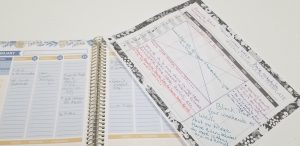
- Eat well: physically, mentally, emotionally, and spiritually.
- Have some fun: You are encouraged to have fun. Adulting is tough.
- Take lunch: Go visit a local library, museum, or sit in your car at a local park.
- Vacation: Plan for it, and take it. But leave some recovery time, so you are not rushing back to work the next day. Another option is weekend trips or a day-cations while kid(s) are at school.
- Nurture your hobbies: When was the last time you ____________?
- Guard your time: Once you’ve blocked it out, it’s yours. Don’t let others guilt you into giving it back.
Slowly implement some of these tips into your life, and remember an empty tank is just that. Empty. You will be more productive by taking care of you, and you’ll be better able to wear all those hats.
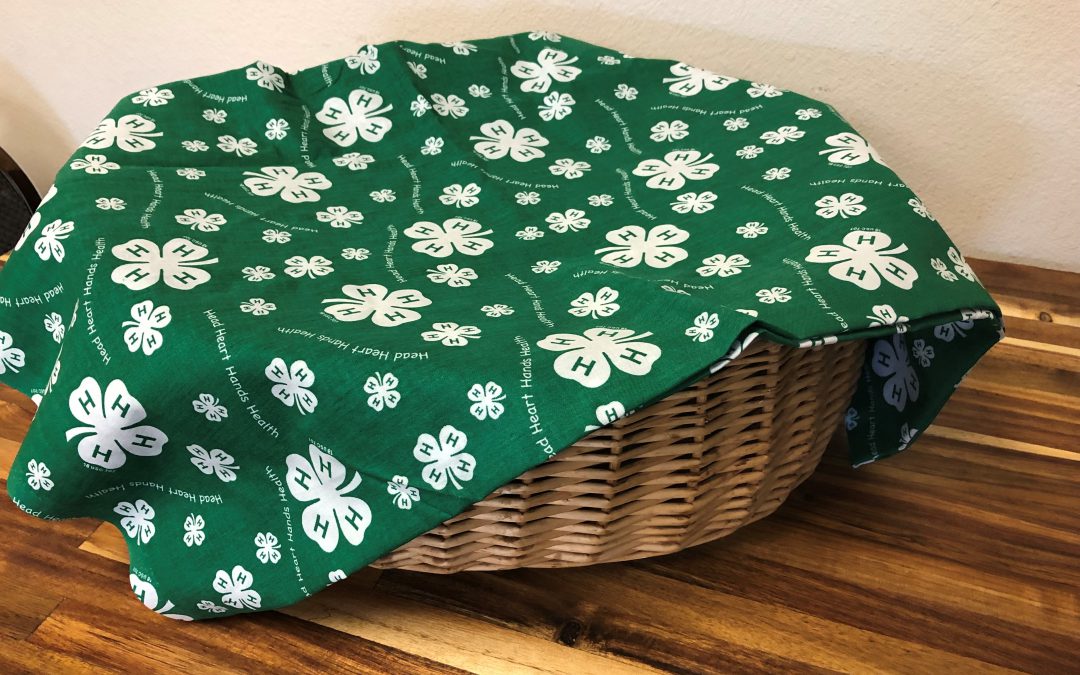
by Marie Arick | Mar 11, 2019
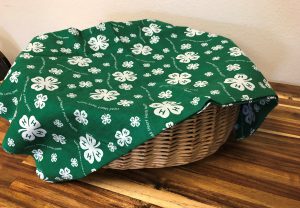
4-H Food Challenge Mystery Basket
Being creative in the kitchen…using a surprise set of ingredients…making a tasty dish…frequent watcher of The Food Network? Then the 4-H Food Challenge camp is the summer day camp for you!
Take a Sneak Peek
Here’s a sample list of possible ingredients in the Fruit & Vegetable category:
- 4 medium potatoes
- 1 cup carrots, sliced
- 1 cup of celery, sliced
- 1 ½ cups green bell pepper strips
- 1/3 cup onions, sliced
- 1 clove garlic, minced
- 1 tomato, cut into wedges
- 3 tablespoons of canola oil, divided
- ½ cup of water
- 2 tablespoons of low sodium soy sauce
- 1 ½ teaspoons of cornstarch
Any idea what you’d prepare? What would you name your dish?
Participants in the 4-H Food Challenge camp will work in teams with 3 to 4 members. Teams will be presented with:
- a food category
- a set of mystery ingredients
- 40 minutes to create a dish, prepare a presentation about their dish, and clean their work area
When time is up, teams will present their creation to a panel of judges describing their collaboration in creating the dish, food safety practices used by the team, how they worked together, and finally, a description of the dish including some nutrition information.
We all eat, so food safety and preparation are skills that we all need. 4-H Food Challenge campers will learn those skills along with nutrition knowledge, teamwork and presentation skills. Look for this day camp opportunity in your local UF/IFAS Extension 4-H program this summer, and join us in putting our skills to the test!
*The 4-H Food Challenge is loosely based on The Food Network show “Chopped” and adapted from the Texas 4-H Food Challenge Contest.
by Whitney Cherry | Mar 8, 2019
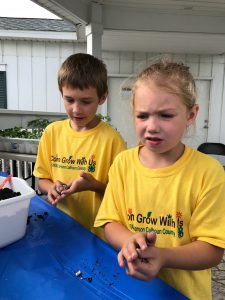
Wildflower seed bombs are a great indoor or outdoor project with unlimited potential for learning.
Wildflower seed bombs are the perfect project for kids itching to get outside. Even if you don’t have a green thumb or you don’t have outdoor space or the weather isn’t cooperating, you can make seed bombs that will help beautify roadsides, vacant areas and neighborhoods.
Give Them a Toss!
These little beauties don’t get their name from any explosive properties but from the fun you have “launching” them around your yard or neighborhood. As you toss them into places that aren’t frequently mowed, you beautify your neighborhood and provide an invaluable food sources for native Florida pollinators like bees, wasps, butterflies, and more.
Even though you may be more fond of some pollinators than others, there’s no doubt we need them all. Their pollination services are critical to fruit development in many of our fruiting crops. So if you like squash, cucumbers, melons, almonds and so much more, here’s what you can do to help:
Gather Your Materials
- Air-dry clay
- Wildflower seeds
- Potting Soil
Make Your Seed Bombs
- Pinch off a small amount of air-dry clay – enough to make a ball about the size of a bouncy ball or about 1″ diameter.
- Work equal parts seeds and soil into the clay and form it into a ball.
Amounts really are up to you. More seeds = more flowers.
But, too much soil will keep the ball from holding it’s shape. If this happens, add more clay and either have a bigger bomb, or divide it into two smaller bombs.
- Store them in a cool dry place and let them dry out completely in an air-tight container until you’re ready to spread some wildflower cheer.
- Now for the fun part! Toss them where you want flowers to grow.
Things to Consider…
- The air-dry clay acts as a binder only. It’s natural, non-toxic, and when wet, it will soften and allow the seeds to grow.
- Before storing in an airtight container, allow your seed bombs out to dry completely. Even a little moisture will allow the seeds to sprout.
- Be careful when throwing your seed bombs.
- Don’t hit people, animals, or other anything else with them – just the ground.
- Throw them where areas don’t get mowed very much. Some people throw them out along roadways or in abandoned lots. If these places are mowed regularly, they won’t last long if they even get to bloom.
- Get permission if you’re throwing them in public places.
Resources
Gardening is just one of the many Florida 4-H programs. To see what programs are available in your county, contact your local UF/IFAS Extension office, or contact your 4-H Agent about starting a gardening program in your county.
by Yolanda Goode | Feb 22, 2019
Generosity is one of the four essential elements youth need for positive youth development. 4-H clubs should do at least one community service project a year as part of their plan of action. This benefits our high school students because most students need service hours as part of graduation requirements. But with all the “have-to-do’s” in life, service can become just a thing to check off and have no real value.
How can we help our 4-H youth get more value from service projects?
Use the Experiential Learning model (Do-Reflect-Apply) used by 4-H programs across the nation. Incorporating the reflect and apply portion of the model does take some effort, but it is not hard to do. If your club does many community service activities, choose which ones to incorporate all the steps of the Experiential Learning model.
How to take it deeper beyond just a thing to do:
Get buy in from youth concerning the service project(s) planned for the year.

UF/IFAS Extension Gadsden County 4-H Club members out delivering Thanksgiving baskets to families in need.
Pre-activity – Have youth do a presentation related to the service project activity:
- Who we are helping: Details about the group/organization
- What type of service(s) will be done for the group
- How will our community service benefit this group/organization
Post activity – have a casual conversation:
- Enquire about how they felt about the service activity
- What was an ah-ha moment
- What did they find challenging
- What could we do differently for next project
- What is something you learned by doing this project that you could use in other areas of your life.
Here’s a great article in the Florida 4-H Volunteer Training Series that really breaks down the process. You can also give your local UF/IFAS Extension 4-H Agent a call for more help.
How can you keep up with the great things we’re doing in our 4-H extension district?
- LIKE the 4-H in the Panhandle Facebook page – @volunteeringinthepanhandle
- LIKE your county’s 4-H Facebook page
- SUBSCRIBE to the 4-H in the Panhandle blog
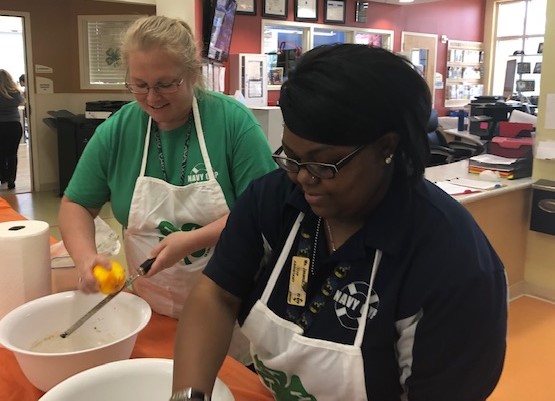
by pmdavis | Feb 14, 2019
Making lotions and bath scrubs, practicing relaxation and doing yoga…doesn’t this sound like a great 4-H club program? Discover 4-H Spa and Relaxation Clubs are a great way to learn about homemade body products while learning relaxation techniques. Youth create a day at the spa by making lotions, soaps, scrubs and lip balms while learning methods to relax like tennis ball massages, creating a happy list, doing yoga and creating a zen garden. An added bonus is homemade products are a fraction of the cost of purchasing and make great gifts for friends and family.
Make your own Luxurious Bath Salts
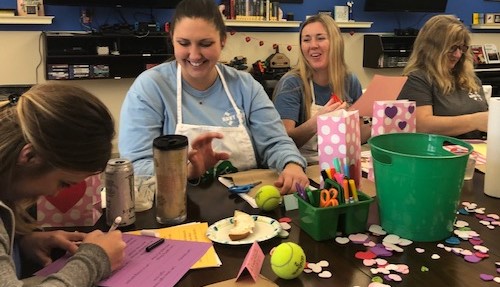
Naval Support Activity-Panama City staff learning how to making calm bags.
- ½ cup baking soda
- ½ cup powdered milk
- 1 cup sea salt
- 1 cup Epsom salt ( scented or plain)
- Use 3-5 drops fragrance oil designed for soaps or diluted essential oil for plain Epsom salt
- Mix ingredients
- Spoon the mixture into storage containers (wide mouth jars, bowls or zip style bags work well)
- Label your container with ingredients and direction for use – Pinterest has several cute label designs
Caution: Essential oils are very strong and can be a skin irritant if applied directly to your skin. National Association for Holistic Aromatherapy recommends diluting essential oils with a carrier oil: use 1 teaspoon of coconut, almond, olive, sunflower or jojoba oil with 2 – 12 drops of the desired essential oil. Then, mix 3-5 drops of the diluted oil to your bath salt mixture. Bath salts are generally safe for most when used properly, but you should talk to your doctor before using bath salts if you have medical conditions such as skin diseases, heart disease or diabetes.
How to Use Your Bath Salts: Fill your tub halfway with warm to hot water, and pour in about 1/2 cup (120 g) of bath salts. For a stronger concentration, you can always add more. If you prefer showers, take a handful and rub over desired area. Bath salts are great to exfoliate by removing dead skin cells leaving the skin smooth and fresh. Tired achy feet or hands? No problem! Add salts to warm water in a dishpan, and immerse your feet or hands and soak away the pain.

NSA-PC staff learning the 4-H Spa & Relaxation Curricula they will use in their 4-H programs.
For more information on 4-H and other programs like this, contact your local UF/IFAS County Extension Office, or visit Florida 4-H.
Are you an adult looking for ways to coach, teach and mentor youth? Contact the 4-H Agent in your county and enroll as a volunteer in 4-H Online. Volunteering not only strengthens the 4-H club, but also shows young people how to live with integrity, optimism, hope, determination, compassion, responsibility and resiliency – skills that will help them succeed in life.
Resource:
Discover 4-H Spa and Relaxation Clubs curriculum
by Taylor Wilken | Feb 1, 2019
 Last year, 520 youth and 170 adults from 34 Florida counties told the 4-H story filling the state capitol with 4-H advocates. Youth educated their representatives, senators, and legislative aides on how 4-H has made an impact in their lives while experiencing the political processes of state government.
Last year, 520 youth and 170 adults from 34 Florida counties told the 4-H story filling the state capitol with 4-H advocates. Youth educated their representatives, senators, and legislative aides on how 4-H has made an impact in their lives while experiencing the political processes of state government.
A sea of green will flood the Florida’s state capitol Thursday, April 4, 2019, as Florida 4-H members, faculty, volunteers, and families participate in the annual 4-H Day at the Capitol event.

2018 attendees on the steps of Florida’s historic capitol building.
4-H Day at the Capitol
- Who: All 4-H Members, Friends, Family and Alumni
- When: April 4, 2019
- Where: Tallahassee, FL
- Cost: $15 (includes lunch and a 4-H polo)
- Registration: February 1-28, 2019 in 4-H Online
Schedule
- 7:30-8:15am – Check-in
- 8:30am – Opening Assembly
- 9:00am – Group Photo
- 9:15am – Meetings with Representatives and Senators begins
- 12:00-1:00pm – Lunch Available for Pick-up (Chik-Fil-A)
- 1:00-1:30pm – Closing Assembly
Each county is encouraged to make appointments with senators and representatives and should schedule their day how it best suits the group. For detailed information on the schedule and to prepare for the event, be sure to read the The 4-H Day at the Capitol Guidebook.
Places to Visit/Things to do
Close to the Capitol, you’ll find several things to do to fill in the rest of your day.
- Governor’s Mansion
- Knott House
- Riley House and Museum
- 4-H Day at the Capitol Scavenger Hunt
- Florida Historic Capitol Museum
- Museum of Florida History
- Big Bend Farm
- For more information, check out Explore Tallahassee
Resources
For more information on 4-H Day at the Capitol or 4-H in your county, contact your local UF/IFAS County Extension Office.










